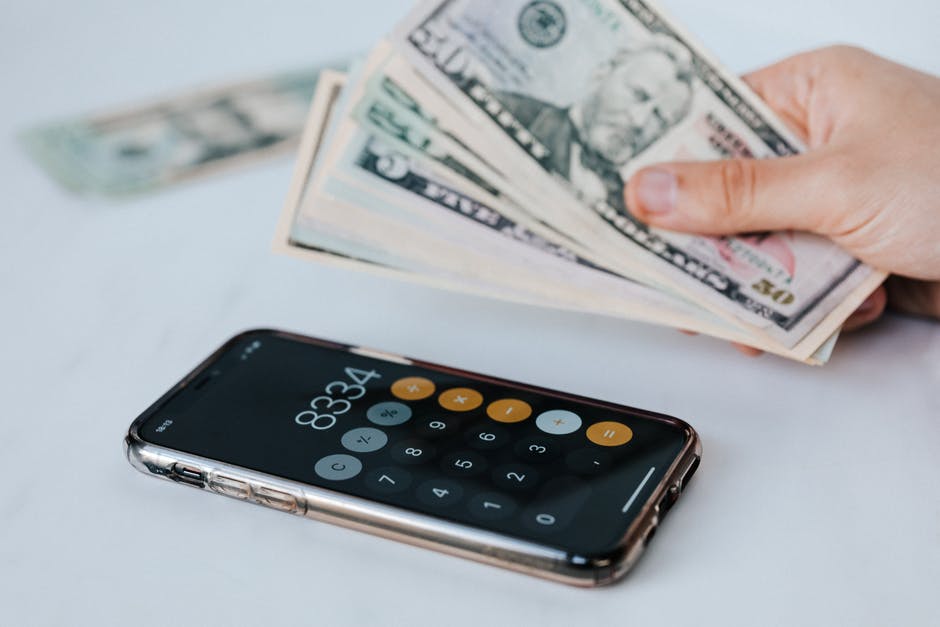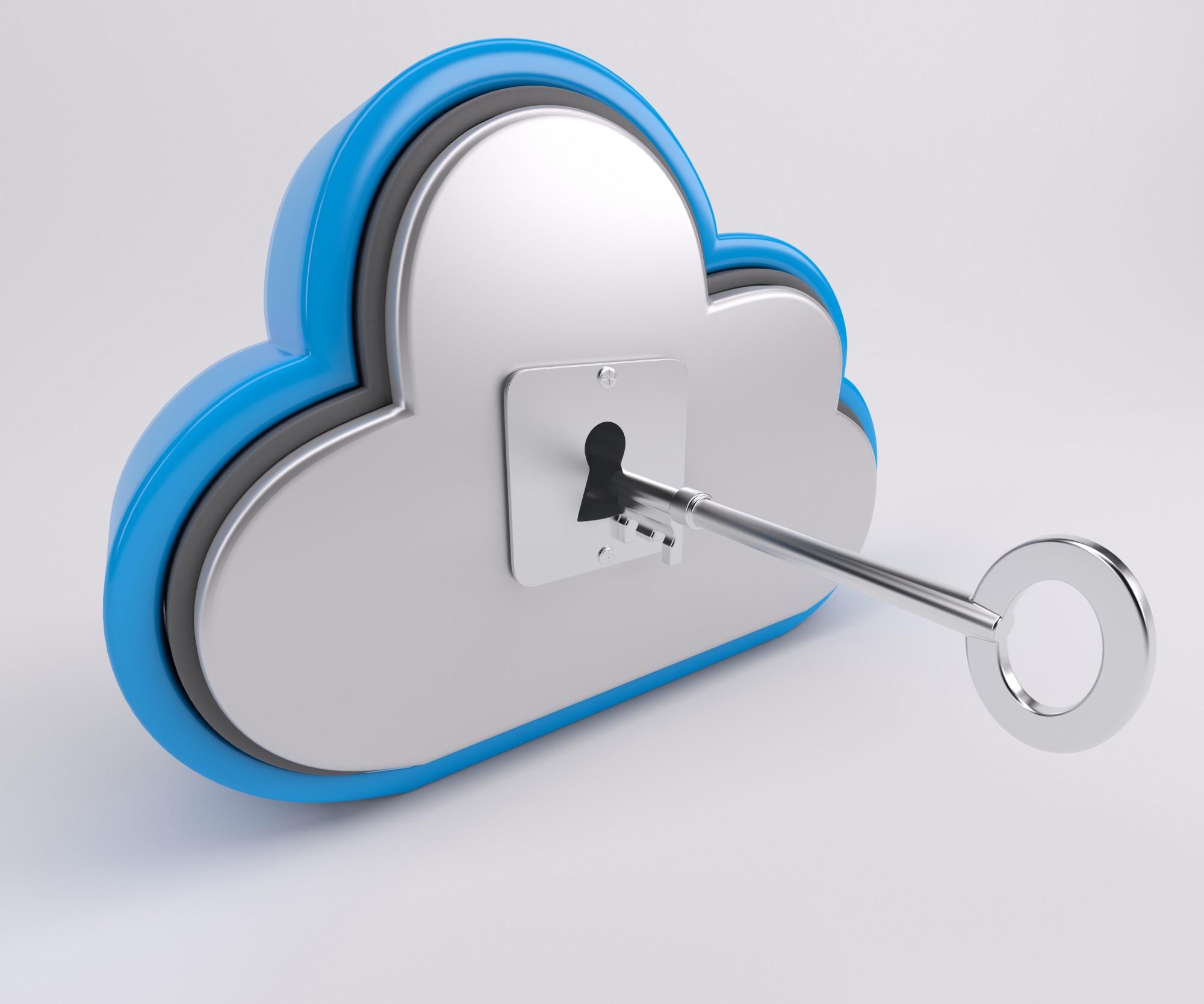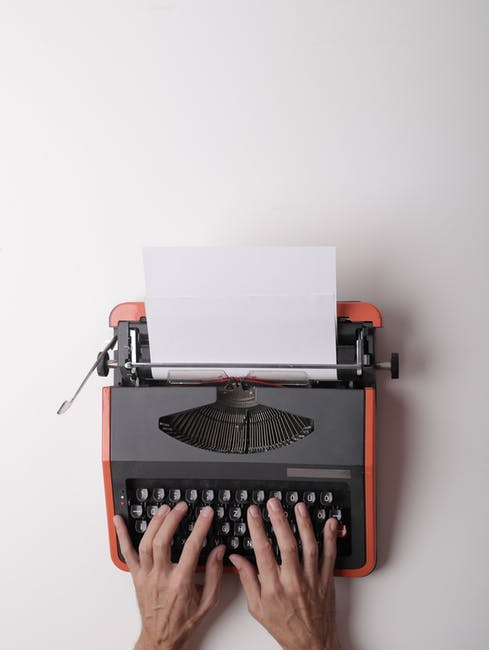Consolidation or Settlement: Which Debt Help Option is Right For You?
Posted on September 18, 2020 by Logo Design Tips and Tricks

When you’re managing debt it may not seem like there are many options available to you. Digging yourself out of debt may be difficult, but it’s not impossible. In fact, you may have more options available than you’d think.
There are a variety of ways for you to pay off your debt. When many people consider their options, most come down to either debt consolidation or debt settlement.
Both options are great ways to deal with debt, but they have their own unique benefits. Consider this post your quick guide on debt consolidation vs debt settlement.
What Is Debt Consolidation?
If you have multiple loans or credit cards you’re dealing with, debt consolidation may be the best way to manage your debt. In simple terms, legitimate debt consolidation allows you to turn multiple payments into one payment.
There are two popular ways to go about this. Some people choose to get a low-interest credit card and use it to pay off smaller amounts of debt. Since everything is on one credit card, they just have to deal with one payment instead of several.
Other people choose to get a loan to consolidate their debt. Using a loan to consolidate debt may be the easiest way to deal with large balances that can’t easily be paid off with one credit card.
What Is Debt Settlement?
When you choose to go down the debt settlement route, you negotiate with creditors to pay a lower amount than what you owe. Choosing this option also means that creditors can stop pursuing you to pay your debt and can protect you from getting sued.
Many people choose to go down the debt settlement route when they’re very behind on payments, have multiple delinquent accounts, and know that they don’t have a way to pay off everything they owe.
Debt settlement can be risky because there’s no guarantee that you’ll get your desired outcome. The settlement process can also take a while, and on average can last anywhere from 2 to 4 years. Your credit score will also take a big hit, penalties, interest, and other fees can still accrue.
Debt Consolidation or Debt Settlement: What’s Right For Me?
Both of these methods can give you the desired outcome of eliminating your debt, but they work in very different ways. The right method for you is going to depend on what you owe, your current financial situation, and what you want your financial future to look like.
If you have manageable debt that you want to get a handle on, debt consolidation might be your best option. Paying everything off and making timely payments on your consolidating loan or credit card can help you gradually eliminate debt and can help improve your credit score.
People that don’t think consolidation is an option should consider settlement. If you already have a lot of late payments and delinquent accounts, the harm a settlement can do to your credit score may not be worse than what’s already occurred.
Financial Advice For Savvy Spenders
Debt consolidation or debt settlement are great ways to get your debt under control, but there are other things you can be doing to improve your financial future.
Do you need advice on how to improve your credit score to secure a mortgage? Are you interested in learning the best way to pay off your debt?
We have a lot of helpful content on our site. Browse our posts and start your financial education today!
What Can a SharePoint Consultant Do for Your Business?
Posted on September 17, 2020 by Logo Design Tips and Tricks

Does your company use SharePoint?
If so, you’re probably aware of the many advantages of the SharePoint software. SharePoint allows you to seamlessly integrate the Office 365 suite and communicate internal news to all of your employees.
But did you know that hiring a SharePoint consultant can also help you increase productivity and client satisfaction?
Here’s why investing your resources in SharePoint consulting is for you:
SharePoint Is Not Dropbox
Many people think SharePoint is basically Dropbox with different packaging. This is not true. Not even a little bit.
With Dropbox, the system is pretty standard, no matter the company. You can share files with your employees over the internet.
SharePoint, however, was created with large corporations in mind. In fact, when it was first developed, it was only affordable to giant companies. Microsoft designed it to suit the needs of those organizations. As such, it was meant to be customized.
What Is a SharePoint Consultant?
A SharePoint consultant is someone hired by a company to help more efficiently use the SharePoint software.
Why can’t you just use the software on your own? You can, but as mentioned above, SharePoint is highly customizable. If you’re anything like most business owners, though, SharePoint is just one part of your company. You don’t have time to sit down and optimize it yourself.
Because of this, you’re probably not getting the most out of your money. You need someone whose sole job is to specialize in SharePoint.
This is where a SharePoint consultant comes in.
If you don’t have the funds to hire another person full-time, don’t fret. Many consultants are freelance, but you can also get a consultant through a company.
What Does a SharePoint Consultant Do?
Key responsibilities of SharePoint consultants include optimizing your use of SharePoint and keeping the technology running smoothly.
They accomplish this by configuring SharePoint to suit your needs. They then help you with its development and implementation.
SharePoint consultants also oversee the upkeep of your technology and assist you as you and your employees use it.
What You Should Look For In a SharePoint Consultant?
Now that you know what a SharePoint consultant does, you’re probably how to choose one who’s qualified.
A good SharePoint consultant will always have the perfect mixture of training and soft skills. When looking for key training, search for someone who is certified in using SharePoint software.
You should also look for someone who prides themselves on their ability to learn new technology. SharePoint constantly adds new elements to its software, so it’s important that the consultant keeps up.
You will also want them to have solid soft skills, such as communication. Since your consultant will be working with your team, it’s important they communicate well.
Want More Business Advice?
Hiring a SharePoint consultant is an excellent choice for your business.
But do you really want to take your success to the next level?
We provide in-depth reporting on all matters related to business. Read some more today!
9 Security Risks of Cloud Computing You Need to Know to Be Safe
Posted on September 16, 2020 by Logo Design Tips and Tricks

Are you aware of the risks with cloud computing?
It’s true that the cloud has revolutionized how we work and store data online. But it isn’t immune to breaches and data theft, so it’s important you know what security risks you may face.
Read on for 9 security risks of cloud computing you need to know so you can keep safe.
1. Reduced Control and Visibility
When moving operations/assets to the cloud, you’ll lose some visibility and control over them. With some external cloud services, the responsibility for infrastructure and policies goes to the CSP.
The extent of this responsibility shift will depend on what cloud service model you use. But it can lead to a shift for agencies when it comes to logging and monitoring security.
You need to perform analysis and monitoring for applications, data, users, and services. But you’ll have to do it without the network-based monitoring that you’re used to in-house.
2. Increased Strains on IT From Complexity
Moving to the cloud can increase the complexity of your IT functions. Your IT staff may need to learn a whole new model to manage, integrate, and operate from the cloud.
Your IT staff must have the ability and capacity to do this. All while managing their current on-site IT responsibilities.
Encryption and key management get more complicated in the cloud. The techniques, services, and tools to log and track them vary for different CPSs. So, this only complicates things further.
There is a risk of emergent risks/threats for hybrid cloud implementation. Implementation methods, policies, and technology all pose a risk.
This extra complexity can strain your IT staff. It can also lead to security gaps not only in your cloud space but your on-site infrastructure as well.
3. Misconfigured Cloud Storage
Moving to the cloud creates new vulnerabilities, but most stem from human error. Most vulnerabilities are the result of simple oversights. These problems have a habit of slipping through the cracks during audits.
The possibilities for oversights are almost unending, but most fall into three categories:
- Failing to change settings from their default values.
- Incorrect levels of user access.
- Leaving confidential data accessible.
Thankfully, fixes for these issues are relatively simple.
Always make sure to double check your security settings before and after you move a system to the cloud. This will limit the possibility of mistakes.
You also need to foster a company culture where IT audits are considered an important task, rather than an annoyance. These audits are your best tool to ensure your systems remain secure in an ever-changing security landscape.
This doesn’t need to be an entirely manual process. There are third-party tools that will help to assess your configurations, find potential security holes, and help fix them. Many can be set up on your systems and run weekly or even daily.
4. Shared Vulnerabilities
When it comes to cloud security, it’s a shared responsibility between you and the provider. This partnership means you need preventative measures in place to protect your data.
Big providers like Google, Microsoft, and Dropbox have procedures to protect their end. But the fine-tuning and control is down to you.
For example, with Office 365, key security protocols are down to you to secure. This includes user password protection, multi-factor authentication, and user access controls.
The point is, you can’t leave the security side of things to the provider. If you do, you’re leaving yourself open and vulnerable. You need to recognize what your responsibilities are on your end and make sure you’re doing it.
5. Loss of Data
Data loss is one of the biggest risks of cloud computing because once it’s gone, it’s gone. And what makes it worse is it’s not only hard to handle, it’s also hard to predict.
There are 4 most common reasons behind data, which are:
Data Alteration
This is when information has changed and can’t go back to the previous version/state. It’s common for dynamic databases.
Unreliable Storage Medium Failure
This is when data gets lost due to issues that are on the cloud provider’s end.
Deletion of Data
Accidental or incorrect deletion of data from the system. No backups are in place to restore it. This is usually human error, a glitch, issues with a messy database, or malicious.
Access Loss
When you still have the information in the system but can’t access it. This is due to a lack of encryption keys, or other login information/permissions.
Frequent backups are your best bet for avoiding this. Have several backup copies in different places.
Also, put in place a clear backup schedule, and decide which data to backup and what doesn’t need it. You can use data loss prevention programs to automate it, so it doesn’t have to be another job for IT.
6. Data Leaks and Breaches
Data breaches on the cloud are usually cause and effect. If you get a data breach, it’s because you haven’t plugged some holes in your security protocol.
Users without permission can access data (on accident or on purpose) and extract it. This leads to a data leak, and data is now where it shouldn’t be.
Information can go out to the public. Usually, it’s either sold on the black market or held for blackmail/ransom.
The extent of the damage will depend on your crisis management plan. But, it will be a black mark against your reputation. People need to know their data is safe in your hands and may view it as a breach of trust.
How data breaches occur?
Whether you are in a public or private cloud, data is under several layers of access. It’s not possible to access it in normal situations. But, from different devices and accounts, if you have the right cryptographic key, you can. If a hacker knows someone has access to something, they can get access too.
Here’s how it can happen:
- A hacker studies the company for exploits and weaknesses (people and tech).
- With a victim picked, the hacker approaches them (via social media, interests, flaws, etc.).
- They trick the victim into giving them access to the company network by either:
- Sneaking malware onto the victim’s device.
- Gaining trust and persuading them to give them their login details.
- Once in, they have everything they need to exploit the cloud system and extract your data.
Your cloud security must be a multi-layer approach. You need to check users’ activity at every step and stay on top of access permissions.
Use multi-factor authentication so that users have to provide extra identity confirmation. For example, typing their password then getting a code by email or phone that’s active for a short time span.
Data-at-rest is any data that you store in the system but isn’t accessed a lot from different devices. Make sure you don’t forget to use encryption here. And have a perimeter firewall between public and private networks. This will control traffic in and out.
7. DoS (Denial of Service) Attack
The cloud is able to carry a heavy workload and will scale with your needs. That’s one of the features that makes it so attractive, especially to growing firms.
But this doesn’t mean it can handle an unexpected surge. The cloud can still stop working if it’s overloaded. And this is a huge threat.
Sometimes, the aim isn’t to access your system, but to stop customers from accessing it. Or to disrupt company workflow. This is a denial of service attack or DoS. To break it down, it’s a system overload on steroids.
DoS messes with your SLA (service level agreement) with customers. This can damage trust and credibility and take a huge hit to your reputation.
One of the SLA requirements is quality and availability of service. And a DoS attack blows that out of the water. There are two types of DoS attack to watch out for:
- A brute force approach from many different sources (DDoS).
- A more elaborate attack that will target a set function or exploit (like order placing or content delivery).
When a DoS attack happens, it stretches your system to the max. Without the resources to handle a sudden traffic influx, speed, and stability drop. This can mean an app or website won’t load, or is so slow it’s timing out.
Your users are getting stuck in a traffic pile up. You’re scrambling to work out where it’s coming from and try to cut off the source. You’re going to need to spend more on resources to fix it.
To help prevent them, make sure your intrusion detection system is up to date at all times. You need to be able to single out anomalous traffic which will be your early warning sign. It detects via behavior and credential factors. Think of it as your cloud system’s burglar alarm.
Make sure you’ve got traffic type inspection features on your firewall. This checks destination and sources of incoming traffic. IDS tools will also assess the nature of this traffic too. It helps you sift the good from the bad, and remove any bad intentions.
Put in place source rate limiting, as a key goal of DoS attacks is to eat up bandwidth. You can also block IP addresses that you consider the source of an attack, to gain quick control in an attack.
8. Shoddy Access Management
Access management (or a lack of it) is up there with the most common risks of cloud computing. Access and who has it is the key to everything. This is why it’s a top priority for hackers to target so much.
Hackers are cunning and creative, but you should be doing everything you can to make it harder for them. If you’re not managing your access levels, you’re making it easier for them. Paired with ineffective crisis management and poor information distribution, you may as well do the job for them.
Again, we’ve said it before but multi-factor authentication is a must here. If you do one thing, it should be to set this up. The extra complexity and layers it adds will help keep you safe.
A disposable key will only last for a set amount of time, then be invalid. If an account is subject to a hacking attempt, it will lock down and send the user a notification.
It’s also worth putting in place an automated, regular password changing protocol. After every 30-60 days, users should be changing their password. Encourage the use of passphrases, not words as these are harder to guess.
Put in place a clear access hierarchy server side. This will determine the level of access each tier gets and what information they can see. For example, marketing doesn’t need to see finance protocols and vice versa. Keep information user-relevant, and remove permissions with staff turnover promptly.
9. API Breaches
One of the main advantages of using cloud-based systems is the ability to access them from anywhere and link them together. Your single master data source can be accessed by your employees, customers, other in-house systems to save time and effort.
However, this huge advantage also presents a major security risk. The ability to externally read and write data in your cloud creates a new vulnerability. If your API access isn’t configured correctly, hackers could find ways into your system, or access data their security level should not allow.
The most common causes of this are reusable tokens and passwords, which are a godsend for brute force attacks, and a lack of access monitoring, which allows hackers to probe for holes without your knowledge.
One of the largest examples of an API breach is the Facebook-Cambridge Analytica scandal. Cambridge Analytics used its API access to harvest Facebook data well beyond their access limits. Over 87 million Facebook users’ accounts were compromised.
Penetration testing is always recommended when you have externally accessible systems. If ethical hackers are able to gain access to your systems, you know exactly which holes you need to plug to stop anyone doing it again. Pen tests should be included in your regular security audits.
Enforcing multi-factor authentication also goes a long way to make sure only the right people are accessing your data via the API.
As with any external system, dangers are always there, but these steps will go a long way to reducing the danger.
Security Risks of Cloud Computing
As you can see, moving to the cloud exposes your business to the security risks of cloud computing. But it isn’t all doom and gloom. With sensible management and security testing, you can keep your data safe, and gain all the benefits that cloud computing brings.
If you found this article useful, check out our other posts.
What Exactly Is the Purpose of a Press Release?
Posted on September 16, 2020 by Logo Design Tips and Tricks

Do you run a small business that offers various products and services? Then it is likely that you already encountered minor bumps along the way.
Sometimes, these issues require damage control. There are also times when you go on a winning streak. As a result, you start expanding your product offering.
Whether it’s the first or the second predicament, a press release can give you that extra push to get you to the next level.
Companies use it to announce something big. But is it all there is to it? What exactly is the purpose of a press release?
Is it still relevant in this digital age? If so, how do you come up with a good one?
Continue reading below as we discuss the purpose, relevance, and benefits of a press release.
The Purpose of a Press Release: Answering the Fundamental Question
First, let us answer the fundamental question: what is the purpose of a press release? Its primary purpose revolves around promotion.
It aims to promote something new and significant that is happening in a company. Sometimes, it may only involve one person. Furthermore, a press release looks to give the details as specific and as clearly as possible.
If we are going to zoom in, press releases also serve promotional and marketing purposes. Firstly, it aims to inform the media about a particular event in the hopes that the media will disseminate the word.
Secondly, press releases look to promote brands on social media, blogs, and websites. This is crucial considering the internet being the richest source of information.
Lastly, press releases look to spur reporters to write news articles and feature stories about the company development.
What Makes a Good Press Release?
We mentioned earlier that companies use a press release as part of crisis management. They release these statements to quell a brewing problem that could be costly.
Hence, a good press release must be objective. It should feature facts and present them in a positive light. And if the press release is not for addressing problems, it should be newsworthy.
It should feature something monumental that the public will likely talk about. The subject can be the launch of a new product. It can also be an upcoming event that only happens once in a blue moon.
Sometimes, it can be a company milestone that reflects the company’s stability. And like news articles, a press release must come with the “who,” “what,” “where,” “when,” and “why” elements.
Press release writers also follow the “inverted pyramid” in journalism. This means the headline and the lead paragraph should contain the most important information of the story.
When it comes to the tone and style, a press release is factual, brief, and simple. Thus, do not use superlative adjectives and hyperbole. In the same manner, avoid those superfluous claims and that bragging tone.
Instead, use active tenses. Pay careful attention to the small details. Never release something that has errors in grammar, spelling, or sentence structure.
And if you don’t have in-house writers in your company, you can outsource from reputable firms like this press release writing service.
Are They Still Relevant Today?
With today’s internet-driven world, people now have access to all sorts of information. They can choose from multiple sources if they want to learn about anything under the sun. Hence, the question: are press releases still relevant to this very day?
The resounding answer is “yes!” Press releases still offer many benefits that companies and individuals can enjoy. For starters, your brand gets instant exposure. This is a huge boost, especially for small and medium-sized businesses.
The same thing goes for start-ups that are looking to gain traction in the market. Through a press release, you can tell everyone about your new products. You can inform your target audience about the latest happenings in your business.
And you can do all of these without having to break the bank.
Another benefit of press releases is that they help increase your sales potential. As press releases highlight your company’s new products and services, you can open up new opportunities for conversions.
By using press releases, you command attention to your business. If people know little about your brand, a press release can pique their interest. In turn, they may want to learn more about what you have to offer.
And since people go to the world-wide-web for information, a press release can help increase traffic to your website. In the United States, 28% of adults are almost always online. Through a press release, you can capture the attention of your target audience and prompt them to visit your site.
Tips for Writing a Press Release
If your company doesn’t have a lot of resources but you know you can write decently, then you can create a promotional press release. However, there are key factors to consider when writing one.
Begin by looking at samples of press releases. Your goal is to get a feel of the tone and format. And when it comes to formatting, always include your brand’s logo, as well as your contact information.
Create a headline and sub-headline. Include your release date then start writing the lead and body.
One powerful tip is to write like a journalist. This means coming up with an appealing headline and a lead that will hook the readers. Avoid any fluff that may disrupt your audience’s attention.
Also, track your company’s press release return on investment (ROI). Check if there is an increase in the number of subscribers in your social media accounts. Consider placing a dollar value estimate for every subscriber.
Use it as a guide in calculating your press release ROI.
Complement Your Press Releases
Now that you know what exactly the purpose of a press release is, you can start using it every time there’s a big happening in your company. But a press release is only one of the many tools you can use to take your brand to the next level.
Complement your press releases by using other strategies. Check out our other articles and start taking your brand to the next frontier.








